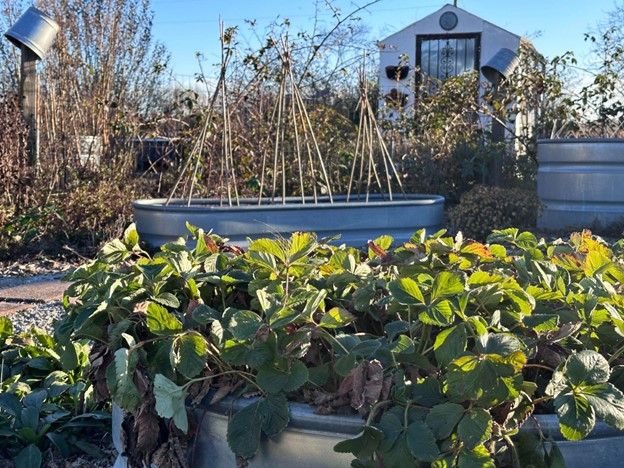You and I both know it: Increasingly shorter days means less time in the garden. Here at the farm, we’re still in cleanup mode. In fact, we’ve gotten behind in our garden chores. It happens to the best of us! We hold off working in the garden until the sun hits just right and the temps are tolerable for finishing what’s left to tidy up.
Our anemone corms have been soaked and planted in trays for pre-sprouting. The same is true for our ranunculus. Both are tucked inside the high tunnel for protection from the frigid winter days ahead. Now we wait for signs that they are coming to life. Once a good root system is established in the tray, we’ll transplant the anemones and ranunculus to large troughs within the high tunnel.

It’s exciting to be able to see something new growing at this time of year. As flower farmers know, it’s just not feasible to grow some things. Some flowers require special attention, more time and the right conditions for growing. As I often say, know your USDA gardening zone. Knowing your gardening zone helps you determine when to plant something—and whether some plants are even capable of being grown in your zone. Having this information will save you a lot of time, energy and money!
In the days leading up to winter, it’s always good to add a few extra inches of mulch or compost to your garden, especially in places where you’re growing more tender perennials. Adding hoop structures to cool flower seeds or seedlings will help them tolerate the frigid temperatures. Getting these tasks done before the arrival of snow and ice will make your life as a gardener or flower farmer so much easier. Again, and I can’t stress this enough, know your gardening zone and let it be your guide.
Here at the farm, all the leaves have fallen to the bottom of the trees and blown throughout other areas of the garden and landscape. So, what do you do with all the leaves? Leave them or rake them up? My choice is to gather up what I can, in the time that I have, and add leaves to the compost. By this time of year, the compost pile is running low. It’s good to get another pile started or add to an existing one, building up for next year’s growing season. Leaves are an excellent source of carbon for balancing the nitrogen in your compost bin or pile.
As a gardener or flower farmer, you’re always looking ahead no matter the season or weather conditions. Planning and sourcing are the tasks for the coming months—along with a little rest as the garden sleeps.
Pamela Anthony
Beehind Thyme Farm & Garden

